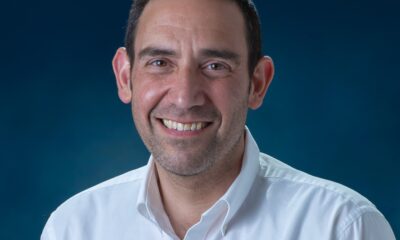
Featured Item

Long COVID stalks us – but not indefinitely
As many as one in ten people who get COVID-19 in 2024 are likely to get “long COVID”, according to Professor Barry Schoub, the professor emeritus of virology at the University of the Witwatersrand and the founding director of the National Institute for Communicable Diseases.
“This is a concerning public-health issue because it infects so many individuals, Schoub said, but pointed out that it seldom lasts indefinitely. In other words, most people will recover fully even if they have long COVID.
“Mild or moderate COVID-19 last for about two weeks for most people, but for some, it can have longer lasting effects, commonly known as ‘long COVID’,” Schoub told the SA Jewish Report.
Pulmonary physician Dr Carron Zinman said the World Health Organization defined long COVID as coronavirus symptoms that persist or return three months after a person becomes ill from infection with SARS-CoV-2.
However, this long-term condition has a whole spectrum of symptoms and can “even affect people who have very mild COVID-19”, she said.
“Remember, COVID-19 affects the whole body and not just the lungs,” Zinman said. “The heart, kidneys, liver, neurological system, skin, blood vessels, and psyche are all involved.”
Family physician Dr Sheri Fanaroff agrees, saying that “long COVID symptoms can be anything from persistent respiratory and lung symptoms to things like a headache, brain fog, and memory loss”.
Long COVID has been applied to those who still have persistent loss of smell and taste. “In my practice, I have a handful of patients who have never got their sense of smell back, even from as far back as 2022,” Fanaroff said.
Similarly, Zinman said, “I’m seeing patients with shortness of breath; a reduced effort tolerance; an inability to get back to their normal level of exercise; asthma; chronic obstructive pulmonary disease; scarring of their lungs; lethargy; fatigue; weakness; brain fog; poor memory; depression; anxiety; palpitations; chest pain; loss of taste and smell; headache; dizziness; myalgia; and poor appetite. I have patients who developed diabetes because of COVID-19, and patients who had pulmonary embolism when they had COVID-19 and needed to be on anticoagulants.”
Schoub said, however, that many people who had long COVID “tolerate it reasonably well from a functional point of view” although “others are quite incapacitated by it”.
“It’s a constellation of clinical syndromes, not just one thing. This is why there’s such a wide variety of clinical presentations. Some people are unable to return to work because they’re so ill from it. And this has become a very important social and public-health problem. For other people, it’s a bit of a nuisance and they can continue with their daily activities. And there’s everything in between,” he said.
In terms of the acute COVID-19 virus that’s going around now, Fanaroff said, “It looks pretty much the same as many other respiratory viral illnesses, like an influenza-type virus, so it’s not a completely unknown virus.”
With viruses like Respiratory Syncytial Virus, which cause things like headaches, fevers, body aches and pains, sore throats, and coughs, people can lose their sense of smell and taste, which was considered a distinguishing feature of COVID-19, Fanaroff said.
“I would say that in the great majority of cases, [COVID-19 is] treated like regular flu. In other words, you treat the symptoms usually with things like Panado and so on,” Schoub said. “Treat the symptoms and bring down the temperature to make people feel more comfortable. In some people, it’s more severe, particularly if they have any underlying illness. People like the elderly, those who are pathologically obese, and so on, may cause a more severe case. Various antiviral medications can be used.”
Schoub said the only way to treat long COVID was by treating individual patient’s symptoms. “Usually it’s a fairly multidisciplinary team involved – the general practitioner, with help from people like physiotherapists, maybe psychologists, occupational therapists, and so on, to manage the individual.”
“In general, though, we aren’t experiencing the severity of illness that we saw in 2020, 2021, and even into 2022 with some of the older strains,” Fanaroff said. “However, vulnerable people, in terms of those with a lot of co-morbidities and the elderly could potentially be at risk of complications.
“What we find now is that most people in South Africa and around the world have been exposed to at least one incident of COVID-19. And many people are also exposed in terms of vaccination, which we still think offers some protection.”
“COVID-19 is behaving more like an endemic virus, and will always be there. It remains a threat in that it can harm vulnerable people, especially those with co-morbidities and those who choose not to be vaccinated. It’s not unique in this way, which is why we strongly advocate for the flu vaccine. The nature of viruses is that they mutate. We live in fear of a mutation that escapes our immunity or the vaccine, and puts us back into that awful time of the pandemic,” said Zinman.
“I think there are a lot more people walking around with COVID-19 who don’t know that they’ve got it. They have a sore throat, a runny nose, and a headache. They say it’s the flu. They think it’s the flu. And the reality is that now, COVID-19 is behaving similarly to flu, which is obviously different to when we were in the middle of a pandemic,” Fanaroff said.
Said Zinman, “Every single patient I have seen with long COVID has had a COVID-19 infection. A lot of patients had mild COVID-19, and the majority didn’t need admission or oxygen. The best way to prevent long COVID-19 is to avoid infection with the SARS-CoV-2 virus and have the vaccine”.
But either way, said Schoub, most individuals with long COVID “come right after six to eight months”.










